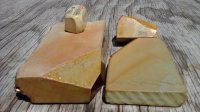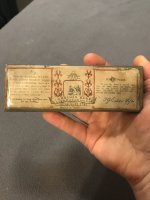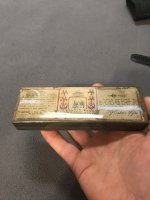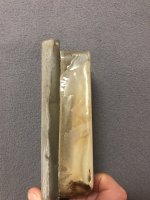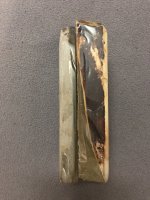How about some photos and information on how you sealed your stones, naturals or synthetics.

This suita Jnat I wrapped in washi japanese mulberry paper and dipped for 5 coats of varnish. Don't forget to use blue tape to cover the side that you use for sharpening.
Alex


This suita Jnat I wrapped in washi japanese mulberry paper and dipped for 5 coats of varnish. Don't forget to use blue tape to cover the side that you use for sharpening.
Alex

